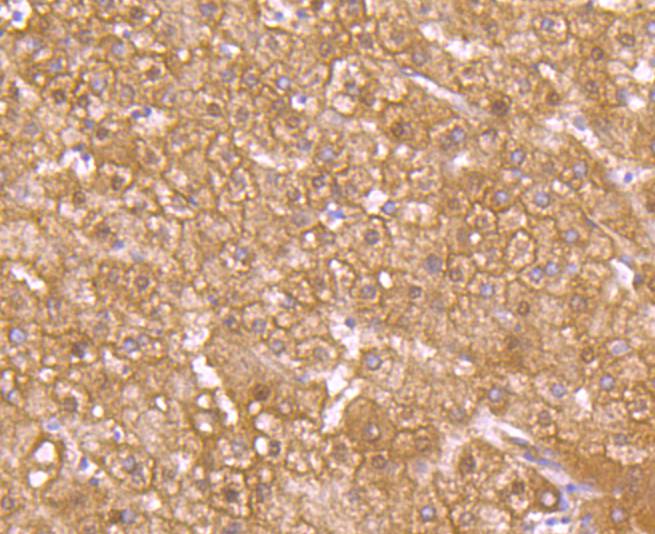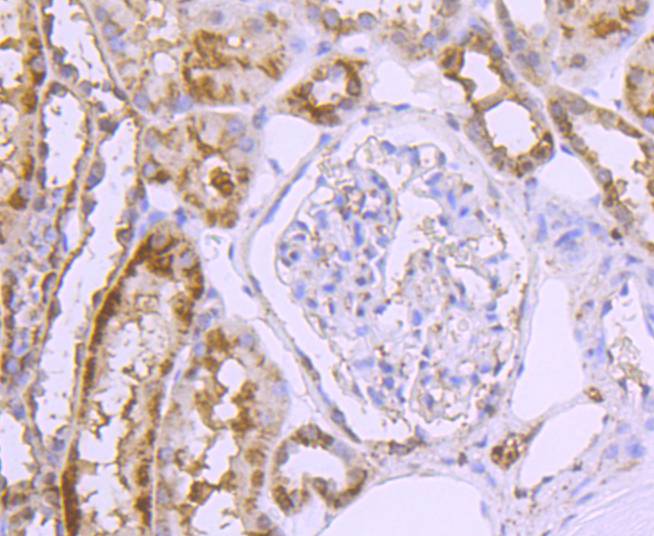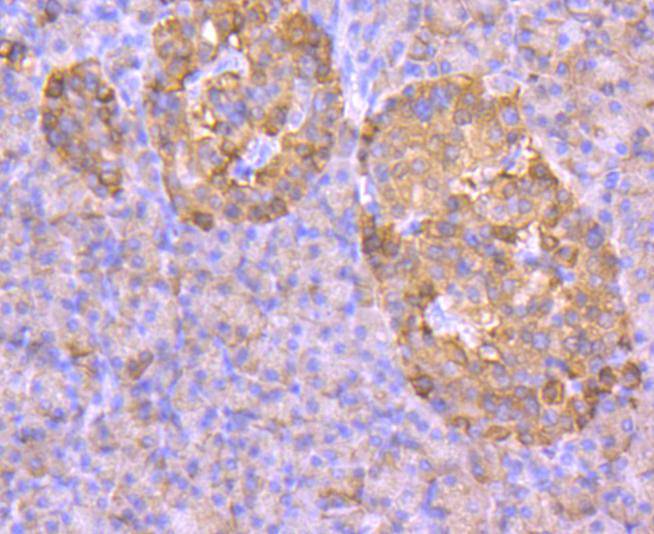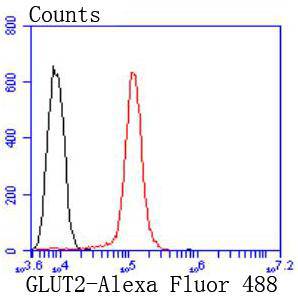Glucose is fundamental to the metabolism of mammalian cells. Its passage across cell membranes is mediated by a family of transporters termed glucose transporters or Gluts. Glut1, Glut3 and Glut4 are high-affinity transporters, whereas Glut2 is a low-affinity transporter. In adipose and muscle tissue, insulin stimulates a rapid and dramatic increase in glucose uptake, which is largely due to the redistribution of the insulin-inducible glucose transporter Glut4. In response to insulin, Glut4 is quickly shuttled from an intracellular storage site to the plasma membrane, where it binds glucose. In contrast, the ubiquitously expressed glucose transporter Glut1 is constitutively targeted to the plasma membrane and shows a much less dramatic translocation in response to insulin. Glut2 expression is seen in pancreatic beta cells, hepatocytes and basolateral membranes of intestinal and epithelial cells, while the highest expression of Glut3 has been found in neuronal tissue.




